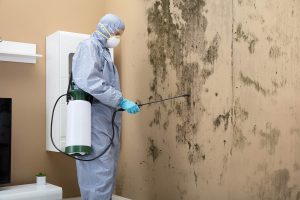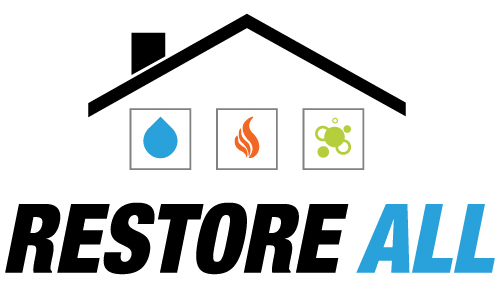 Discovering mold in your home can be a cause for concern, but it’s important not to panic. With the right knowledge and actions, you can effectively address the issue and prevent mold from returning. In this comprehensive guide, we will provide you with a step-by-step approach to dealing with mold in your home. From identifying the problem to choosing the right remediation method, we will cover everything you need to know to handle mold effectively.
Discovering mold in your home can be a cause for concern, but it’s important not to panic. With the right knowledge and actions, you can effectively address the issue and prevent mold from returning. In this comprehensive guide, we will provide you with a step-by-step approach to dealing with mold in your home. From identifying the problem to choosing the right remediation method, we will cover everything you need to know to handle mold effectively.
Understanding Mold and Its Causes
Before diving into the specifics of mold remediation, it’s crucial to understand what mold is and how it forms in the first place. Mold is a type of fungi that thrives in damp environments. It reproduces through spores that can travel through the air and settle on surfaces. When these spores find a suitable environment with moisture, they can grow and spread rapidly.
The key to mold control is moisture control. Mold needs moisture to survive and grow, so addressing any sources of excess moisture is essential. Common causes of mold growth in homes include water leaks, high humidity levels, condensation, and poor ventilation. By identifying and addressing these underlying issues, you can effectively prevent mold from recurring.
Recognizing the Signs of Mold
Signs of mold in your home may vary depending on the extent of the infestation and the type of mold present. Some common signs to look out for include:
- Visible mold growth: You may notice patches or clusters of mold on walls, ceilings, floors, or other surfaces. Mold can appear in various colors, including black, green, or white.
- Musty odor: Mold often emits a distinct, unpleasant smell. If you notice a persistent musty odor in your home, it could be a sign of hidden mold.
- Allergic reactions: Mold can trigger allergic reactions in some individuals. If you or your family members experience symptoms like sneezing, coughing, itchy eyes, or a runny nose that seem to worsen when indoors, it could be a result of mold exposure.
If you suspect mold growth in your home, it’s crucial to take action promptly to prevent further damage and potential health risks.
Assessing the Situation
Once you’ve identified potential signs of mold in your home, it’s important to assess the extent of the problem. While small areas of mold growth can often be addressed through DIY methods, larger infestations may require professional assistance. Here are some steps to follow when assessing the situation:
- Document the mold: Take photos or videos of the affected areas to document the extent of the mold growth. This documentation can be useful for insurance purposes or when seeking professional help.
- Consider the size of the infestation: If the mold covers an area larger than 10 square feet or is the result of extensive water damage, it’s advisable to consult a professional mold remediation company.
- Evaluate the underlying cause: Identify and address the source of moisture that allowed mold to grow. This could involve fixing leaks, improving ventilation, or reducing humidity levels in your home.
By thoroughly assessing the situation, you can make an informed decision about whether to handle the mold remediation yourself or seek professional assistance.
Hire Professional Mold Remediation Services
For larger or more complex mold infestations, it’s advisable to hire a professional mold remediation company. These professionals have the expertise, equipment, and experience to handle extensive mold problems safely and effectively. Here are some important considerations when selecting a professional mold remediation service:
- Research and gather recommendations: Look for reputable mold remediation companies in your area. Seek recommendations from friends, family, or trusted online sources.
- Check credentials and certifications: Ensure that the company you choose is licensed, insured, and certified in mold remediation. These credentials demonstrate their expertise and adherence to industry standards.
- Obtain multiple estimates: Request estimates from several companies to compare their services and pricing. Be wary of unusually low or high prices, as they may indicate subpar services or hidden costs.
- Ask for references: Request references from past clients to gauge the company’s reputation and quality of work. Contact these references to inquire about their experiences.
- Review the contract: Before hiring a mold remediation company, carefully review the contract. Ensure that all services, costs, and warranties are clearly outlined.
- Avoid conflicts of interest: Choose a company that is independent of the mold testing process. This helps ensure unbiased results and recommendations.
By hiring a professional mold remediation service, you can have peace of mind knowing that the mold problem will be handled thoroughly and effectively.
Preventing Future Mold Growth
Once you’ve addressed the existing mold issue in your home, it’s crucial to take steps to prevent future mold growth. By implementing preventive measures, you can maintain a mold-free environment and protect your home and health. Here are some tips to prevent mold growth:
- Control moisture levels: Monitor and maintain optimal humidity levels in your home, ideally between 30% and 50%. Use dehumidifiers in damp areas, fix any water leaks promptly, and ensure proper ventilation in bathrooms, kitchens, and other areas prone to moisture.
- Improve ventilation: Proper airflow helps prevent excess moisture buildup. Use exhaust fans in bathrooms and kitchens, open windows to promote air circulation, and ensure that air conditioning systems are functioning correctly.
- Address condensation: Condensation can contribute to mold growth. Insulate windows, pipes, and other surfaces prone to condensation to reduce moisture buildup.
- Regularly clean and dry: Regularly clean and dry surfaces prone to moisture, such as showers, sinks, and countertops. Wipe up spills promptly and ensure proper ventilation during activities that generate moisture, such as cooking or showering.
- Inspect and maintain your home: Regularly inspect your home for any signs of water damage, leaks, or plumbing issues. Address these problems promptly to prevent mold growth.
- Monitor indoor humidity: Use a hygrometer to monitor indoor humidity levels. This device can help you identify areas of concern and take appropriate action to control moisture.
By implementing these preventive measures, you can significantly reduce the risk of future mold growth in your home.
Additional Resources
For further information and resources on mold prevention, remediation, and related topics, consider the following sources:
- Centers for Disease Control and Prevention (CDC) – Mold
- Environmental Protection Agency (EPA) – Mold Resources
- National Association of Home Builders (NAHB) – Mold Resources
- American Lung Association – Mold and Dampness
Remember, addressing mold promptly and effectively is crucial for maintaining a healthy and safe living environment.
Discovering mold in your home can be a cause for concern, but by following the steps outlined in this guide, you can effectively address the issue and prevent mold from returning. Whether you choose to handle the remediation yourself or hire a professional, the key is to act promptly and address any underlying moisture issues. By implementing preventive measures, you can create a mold-free environment and ensure the long-term health and safety of your home.
Contact Us (954-338-1111) for a Free Estimate!
—
 About Restore All
About Restore All
Restore All, LLC is a licensed, insured, full-service Professional restoration company providing Water, Fire and Mold remediation and restoration for residential and commercial property. Our certified Water & Fire damage technicians and licensed Mold assessors & remediators are committed to providing professional restoration and fast and affordable service 24 hours a day. Call us today at (954) 338-1111 to see how we can help.
> Learn More

 About Restore All
About Restore All